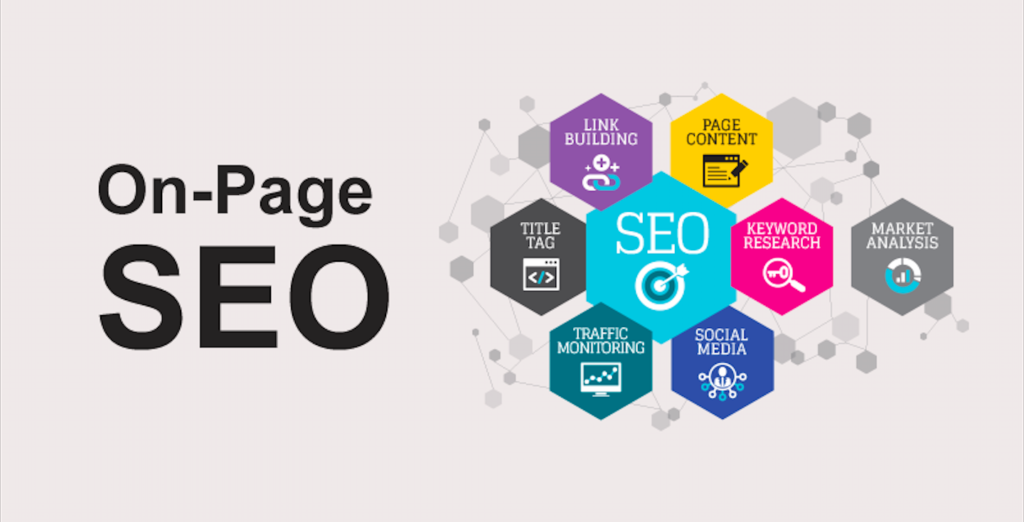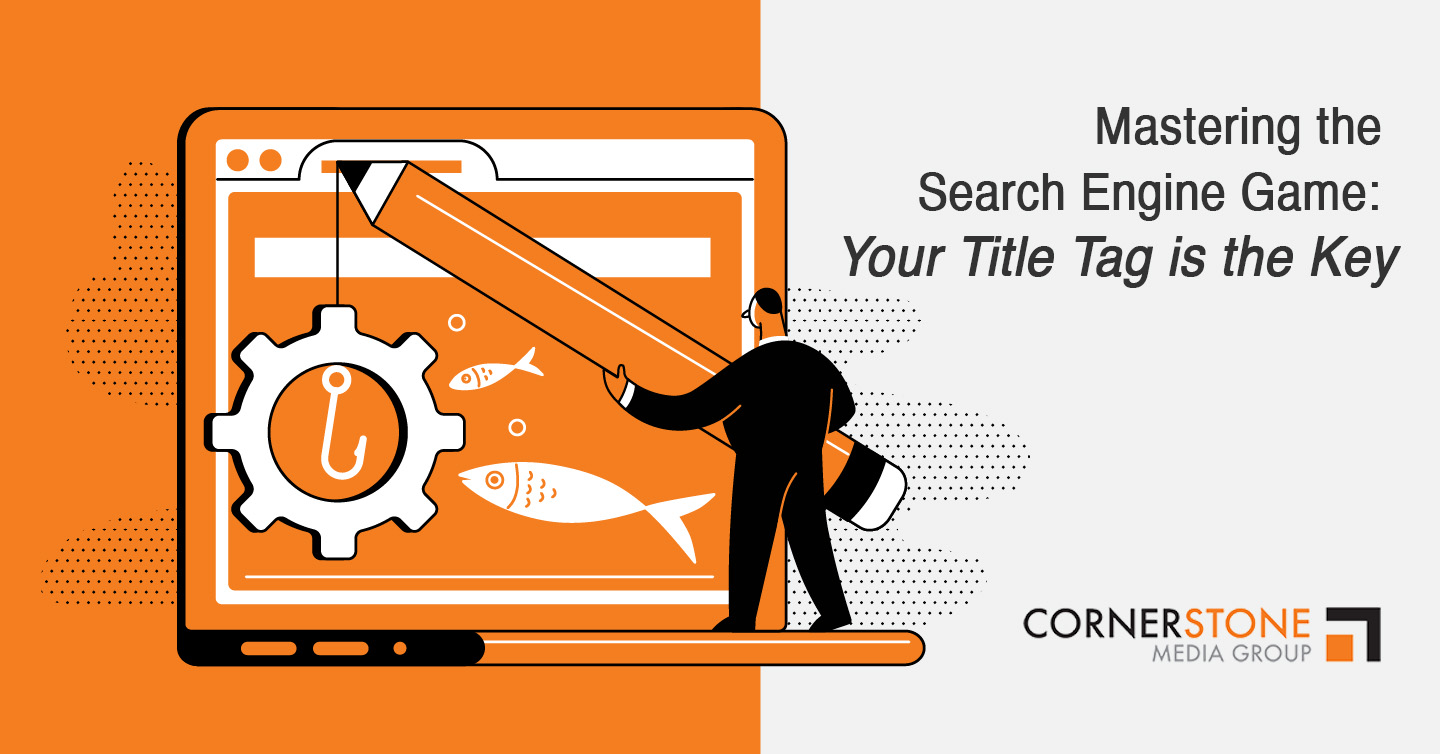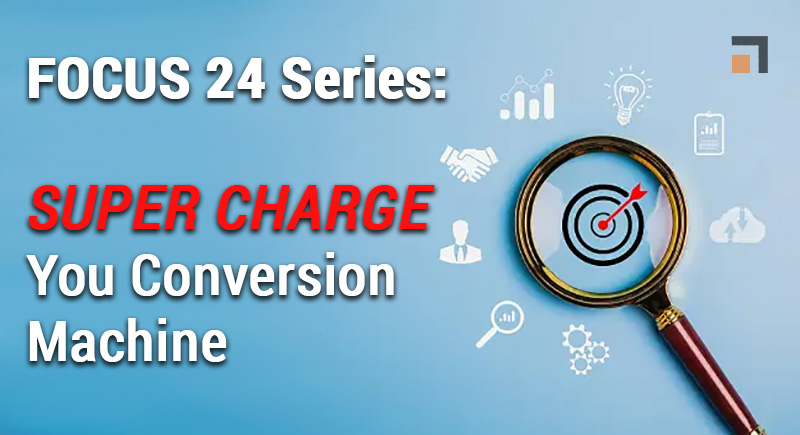
21 Basic SEO Tasks All Business Owners & Marketers Should Know!
SEO (Search Engine Optimization) can be a frustrating and confusing thing to understand and even know where to begin. The following list of tasks will give you the things you need to implement to help you rise above your competition.
Boom shares its SEO tips in this infographic.
Here are a few that make their list:
- Develop a strong site structure
- Ensure your site is mobile-friendly
- Optimise site speed
- Use HTTPS
- Use either www or non-www
- Improve indexability
- Add a site map
- Develop a keyword strategy
- Create awesome content
Check out the infographic for more details. Be sure to read the practical applications of each of these after the graphic.

In the ever-evolving landscape of digital marketing, search engine optimization (SEO) remains a cornerstone strategy for driving organic traffic to websites. As a business owner or marketer, understanding and implementing basic SEO tasks can significantly impact your online visibility and success.
In this blog post, we’ll delve into the essential SEO tasks that every business owner and marketer should learn and incorporate into their digital marketing strategy.
Develop a Strong Site Structure
A solid site structure is the foundation of effective SEO. It not only enhances user experience but also helps search engines crawl and index your website more efficiently. A well-organized site structure makes it easier for both visitors and search engine bots to navigate through your content. Here’s how you can develop a strong site structure:
- Clear Hierarchy: Organize your website content into a clear hierarchy of categories, subcategories, and pages. This makes it intuitive for users to find what they’re looking for and aids search engines in understanding the context of your content.
- Internal Linking: Use internal links to connect related content within your website. Internal linking improves user navigation and helps distribute authority throughout your site. It also enables search engines to discover and index new pages.
- XML Sitemap: Create an XML sitemap that lists all the important pages on your site. This helps search engines understand the structure of your website and index your content more effectively.
Ensure Your Site is Mobile-Friendly
Mobile-friendliness is no longer just a bonus; it’s a necessity. With a significant portion of internet users accessing websites through mobile devices, Google and other search engines prioritize mobile-friendly websites in their rankings. To ensure your site is mobile-friendly:
- Responsive Design: Use a responsive design that adapts your website layout and content to different screen sizes and devices. This provides a seamless experience across desktops, tablets, and smartphones.
- Mobile Page Speed: Optimize your website’s loading speed for mobile devices. Slow-loading pages can lead to higher bounce rates and lower search engine rankings. Compress images, minimize scripts, and leverage browser caching to improve mobile page speed.
- Usability: Pay attention to the user experience on mobile devices. Ensure that buttons, links, and forms are easily clickable and navigable on smaller screens.
Optimize Site Speed
Site speed is not only crucial for user satisfaction but also impacts your SEO efforts. Google considers page loading speed as a ranking factor, emphasizing the importance of a fast-loading website. Here’s how you can optimize site speed:
- Image Optimization: Compress and resize images before uploading them to your website. Large images can significantly slow down page loading times.
- Browser Caching: Enable browser caching to store static resources like images, CSS, and JavaScript files on visitors’ browsers. This reduces the need to download these resources each time a user visits your site.
- Minimize Redirects: Excessive redirects can add unnecessary delays to page loading. Limit the use of redirects and ensure they’re necessary for the user experience.
Use HTTPS
Website security is a top priority for both users and search engines. HTTPS (Hypertext Transfer Protocol Secure) encrypts the data exchanged between a user’s browser and your website’s server, ensuring a secure connection. Google considers HTTPS as a ranking signal and may show a “Not Secure” warning for websites without it. To implement HTTPS:
- SSL Certificate: Obtain and install an SSL certificate from a trusted certificate authority. This certificate encrypts the data transmitted between users and your website, enhancing security.
- Update Internal Links: Update all internal links to use the “https://” protocol instead of “http://.” This ensures a consistent secure connection throughout your website.
- Check Mixed Content: Mixed content, where both secure (HTTPS) and non-secure (HTTP) elements are present on a page, can trigger security warnings. Audit your website for mixed content and fix any issues.
Use Either www or Non-www
Choosing between using “www” or “non-www” (also known as the naked domain) is a fundamental decision that impacts your website’s URL structure. While this choice doesn’t have a significant impact on SEO, it’s important for consistency and user experience. Here’s how to make the choice:
- 301 Redirect: Decide whether you want to use “www” or “non-www,” and set up a 301 redirect from the non-preferred version to the preferred one. This ensures that all traffic is directed to a single version of your website.
- Update Internal Links: Update all internal links, canonical tags, and sitemaps to reflect your chosen version (with or without “www”).
- Google Search Console: Set your preferred domain version in Google Search Console to communicate your preference to Google.
Improve Indexability: Making Your Website Search-Friendly
Indexability is the foundation of SEO. It refers to the ease with which search engines can crawl and index the content on your website. If search engines can’t effectively access and understand your site, it’s unlikely to appear in search results. Here’s how you can improve indexability:
- Optimize Your Robots.txt File: The robots.txt file is used to instruct search engine crawlers on which parts of your site to crawl and which to avoid. Make sure that important pages are not blocked by this file and that sensitive information is appropriately protected.
- Create and Submit an XML Sitemap: An XML sitemap is a roadmap of your website that helps search engines discover and index your pages. Generating an XML sitemap and submitting it to search engines (e.g., Google Search Console) ensures that all your relevant pages are considered for indexing.
- Use Clean URL Structures: Ensure that your website’s URLs are concise, descriptive, and follow a logical hierarchy. This not only helps search engines but also makes the user experience better.
Add a Sitemap: Guiding Search Engines to Your Content
A sitemap acts as a guide for search engines, providing information about the structure of your website and the relationship between different pages. This can greatly enhance the discoverability of your content. Here’s how to create and add a sitemap:
- Choose a Sitemap Generator Tool: There are various online tools available that can automatically generate a sitemap for your website. Some popular options include Yoast SEO, Screaming Frog, and Google’s own XML Sitemaps generator.
- Include Important Pages: Ensure that your sitemap includes all the essential pages of your website, such as the homepage, product pages, blog posts, and contact information.
- Submit the Sitemap to Search Engines: Once you’ve generated your sitemap, submit it to search engines through their respective webmaster tools (e.g., Google Search Console, Bing Webmaster Tools). This ensures that search engines are aware of your sitemap and can use it to index your pages more efficiently.
Develop a Keyword Strategy: Connecting with Your Target Audience
Keywords are the terms or phrases that people use to search for information online. Developing a solid keyword strategy is vital for aligning your content with your target audience’s search intent. Here’s how to craft an effective keyword strategy:
- Keyword Research: Use keyword research tools like Google Keyword Planner, SEMrush, or Ahrefs to identify relevant keywords related to your business. Focus on both short-tail and long-tail keywords to capture a broader range of search queries.
- Prioritize User Intent: Understand the intent behind each keyword. Is the user looking for information, products, or services? Create content that matches the user’s intent to enhance engagement and conversions.
- On-Page Optimization: Once you’ve identified your target keywords, strategically place them in your content’s titles, headings, and body. However, avoid keyword stuffing, as it can negatively impact user experience and search rankings.
Create Awesome Content: The Heart of SEO
Content is king in the world of SEO. High-quality, relevant, and engaging content not only attracts visitors but also encourages them to stay on your site and explore further. Here’s how to create awesome content that resonates with both users and search engines:
- Understand Your Audience: Identify your target audience’s needs, interests, and pain points. Craft content that addresses their questions and provides valuable solutions.
- Incorporate Visual Elements: Enhance your content with images, infographics, videos, and other visual elements. Visual content not only makes your content more engaging but also helps break up long blocks of text.
- Maintain Consistency: Consistency is key when it comes to content creation. Develop a content calendar to ensure a steady flow of fresh content that keeps your audience engaged and coming back for more.
Use Long-Form Content: Going In-Depth for Better Engagement
Long-form content refers to articles, blog posts, or guides that are in-depth and comprehensive. While short-form content has its place, long-form content can provide more value and often performs better in search results. Here’s why you should consider using long-form content:
- Thoroughly Cover Topics: Long-form content allows you to dive deep into a topic, providing comprehensive information that satisfies user queries. This can position you as an authoritative source in your industry.
- Capture Featured Snippets: Search engines often use long-form content to generate featured snippets, which appear at the top of search results. These snippets can significantly increase your visibility and click-through rates.
- Encourage Backlinks: Well-researched and informative long-form content is more likely to attract backlinks from other websites. Backlinks are crucial for building your website’s authority and improving its search rankings.
Optimize Your Title and Meta Description Tags
When it comes to SEO, your title and meta description tags are like the first impression you make on search engine users. These elements not only inform search engines about the content of your page but also influence whether users click through to your site. To optimize these tags effectively:
- Title Tag: Your title tag should be concise, descriptive, and relevant to the content of the page. Include your primary keyword within the title while ensuring it reads naturally to human users. Aim for a length of around 60 characters to prevent truncation in search results.
- Meta Description Tag: While meta descriptions don’t directly impact search engine rankings, they do influence click-through rates. Craft a compelling meta description that accurately summarizes the page’s content and entices users to click. Keep it under 160 characters for optimal display.
Remember, each page on your website should have a unique title and meta description that accurately reflects the content of that specific page.
Optimize Your H1 Header Tags
Header tags (H1, H2, H3, etc.) are essential for both search engines and users to understand the structure and hierarchy of your content. The H1 tag represents the main heading of the page and carries more weight in terms of SEO. To optimize your header tags:
- H1 Tag: Make sure each page has a single H1 tag that concisely summarizes the main topic of the page. Include your target keyword in the H1 tag while maintaining readability.
- Subheading Tags (H2, H3, etc.): Use subheading tags to break down content into sections and subsections. This not only enhances readability but also helps search engines understand the content’s organization. Incorporate relevant keywords naturally into these subheadings.
By using header tags effectively, you’re not only enhancing your website’s SEO but also creating a more user-friendly experience.
Add Multimedia
Incorporating multimedia elements such as images, videos, infographics, and diagrams can significantly enhance your website’s appeal to users. From an SEO perspective, multimedia can offer several benefits:
- Reduced Bounce Rates: Engaging multimedia can keep visitors on your site for longer periods, which can improve your site’s bounce rate—a factor search engines consider when ranking pages.
- Enhanced Content: Images and videos can provide additional context to your content, making it more comprehensive and valuable to users.
- Image Optimization: Ensure images are appropriately compressed for faster loading times. Use descriptive file names and alt tags to give search engines context about the image’s content.
- Video Optimization: Host videos on platforms like YouTube and embed them on your site. This can improve your chances of ranking in both YouTube and traditional search engine results.
By diversifying your content with multimedia, you’re catering to different learning styles and boosting your SEO efforts simultaneously.
Optimize Your Permalink Structure
The permalink, or URL, of each page on your website is an often overlooked aspect of SEO. A well-structured URL can convey valuable information to search engines and users alike. To optimize your permalink structure:
- Keep it Simple: Create URLs that are clean, concise, and easy to understand. A user should be able to glance at the URL and get an idea of what the page is about.
- Include Keywords: Whenever possible, include your target keyword in the URL, especially if it accurately represents the page’s content. However, avoid keyword stuffing—keep it relevant and natural.
- Use Hyphens: Separate words in the URL using hyphens (-) to improve readability. Avoid using underscores or other special characters.
- Avoid Dynamic Parameters: URLs with dynamic parameters (e.g., “?id=123”) can be confusing to both users and search engines. Use static URLs that clearly convey the page’s content.
A well-optimized permalink structure not only aids in SEO but also contributes to a user-friendly experience.
Remove Duplicate Content
Duplicate content can harm your SEO efforts by confusing search engines about which version of a page to index and rank. It’s essential to identify and address duplicate content issues. Here’s how:
- Use Canonical Tags: If you have similar content across multiple pages, use canonical tags to indicate the preferred version that should be indexed. This helps prevent search engines from treating similar pages as duplicates.
- Avoid Plagiarism: Ensure that all content on your website is original. Plagiarized content can lead to severe penalties from search engines and damage your reputation.
- Consolidate Similar Pages: If you have several pages with similar content, consider consolidating them into one comprehensive page. This can strengthen your content’s authority and reduce duplicate content issues.
- Regularly Check for Duplication: Periodically use tools to scan your website for duplicate content. This proactive approach can prevent issues from arising.
By addressing duplicate content, you’re streamlining your website’s SEO efforts and presenting a more cohesive experience to both users and search engines.
Build a Network of Internal Links
Internal linking is the practice of connecting different pages within your website through hyperlinks. This not only helps visitors navigate your site more easily but also plays a crucial role in SEO. When search engine bots crawl your website, they use internal links to discover and index new pages. Additionally, internal links distribute the “link juice” (SEO value) across your site, which can boost the ranking of important pages.
To effectively build a network of internal links, consider the following tips:
- Create Relevant Anchor Text: Use descriptive and relevant anchor text for your internal links. Instead of using generic phrases like “click here,” use keywords that accurately describe the content of the linked page.
- Prioritize Important Pages: Internal links can pass SEO value, so prioritize linking to important pages that you want to rank higher on search engine results pages (SERPs).
- Hierarchy and Structure: Organize your internal links in a logical hierarchy. Your website’s structure should reflect the importance of different pages and topics.
- Avoid Overlinking: While internal linking is beneficial, avoid overloading your content with too many links. Focus on providing value to the reader.
Use Link Attributes
When you create links on your website, you have the opportunity to use link attributes that provide additional information to search engines about the nature of the link. The two most common link attributes are “nofollow” and “sponsored.”
- Nofollow: Adding the “nofollow” attribute to a link tells search engines not to pass any SEO value from your page to the linked page. This is often used for user-generated content, like comments and forum posts, to prevent spam and manipulation.
- Sponsored: The “sponsored” attribute is used to indicate that a link is a paid advertisement or sponsorship. This helps search engines identify and handle paid links appropriately.
Using these attributes appropriately can help you maintain a healthy and natural link profile, which is crucial for SEO success.
User-Friendly 404 Error Pages
Encountering a 404 error page can be frustrating for users and detrimental to your website’s SEO. A 404 error occurs when a user tries to access a page that doesn’t exist on your site. However, you can turn this negative experience into a positive one by creating a user-friendly 404 error page.
Here’s how to make the most of your 404 error page:
- Clear Messaging: Clearly explain that the requested page couldn’t be found. Use friendly language and provide suggestions on what the user can do next.
- Navigation Links: Include links to your homepage, popular pages, and categories to help users continue navigating your site.
- Search Functionality: Adding a search bar to your 404 page allows users to search for the content they were looking for.
- Branding and Design: Maintain consistent branding and design elements on your 404 page to ensure users know they’re still on your website.
- Monitor and Improve: Regularly monitor your website’s analytics to identify pages that frequently result in 404 errors. Consider creating or redirecting content to fulfill these user needs.
Make Social Sharing Easy
Social media platforms play a significant role in driving traffic to websites and increasing brand visibility. Making it easy for users to share your content on their social media profiles can amplify your reach and engagement.
Here’s how you can facilitate social sharing:
- Social Sharing Buttons: Integrate social sharing buttons on your blog posts, articles, and other shareable content. These buttons allow users to quickly share your content with their followers.
- Open Graph Tags: Implement Open Graph tags on your website to control how your content appears when shared on platforms like Facebook, Twitter, and LinkedIn. This includes specifying the title, description, and image that should accompany the shared link.
- Image Optimization: Ensure that the images you use in your content are optimized for social sharing. Images with the correct dimensions and high-quality visuals are more likely to attract engagement.
- Mobile-Friendly Sharing: Many users access social media on mobile devices. Ensure that your social sharing buttons and content display correctly on mobile platforms.
Encourage Comments
Engagement signals, such as user comments, play a role in SEO by indicating that your content is valuable and relevant to users. Comments can also generate additional content related to your topic, which can attract more organic traffic.
To encourage comments on your content:
- Ask Questions: End your blog posts or articles with questions that encourage readers to share their thoughts or experiences in the comments.
- Respond Promptly: Engage with users who comment on your content. Responding to comments shows that you value user input and encourages more interactions.
- Moderate Effectively: Implement a comment moderation system to prevent spam and maintain a positive environment for users to engage.
- Use Comment Plugins: If you’re using a content management system (CMS) like WordPress, consider using comment plugins that enhance the commenting experience and allow users to log in with their social media accounts.
Conclusion
In conclusion, mastering these basic SEO tasks can significantly impact your website’s visibility, user experience, and search engine rankings.
Keep in mind that SEO is an ongoing process, and staying informed about the latest trends and algorithm updates is essential for maintaining your website’s competitive edge in the digital landscape.






